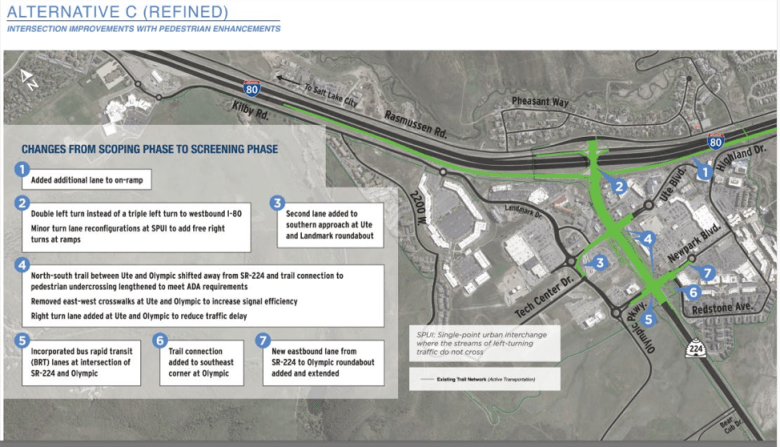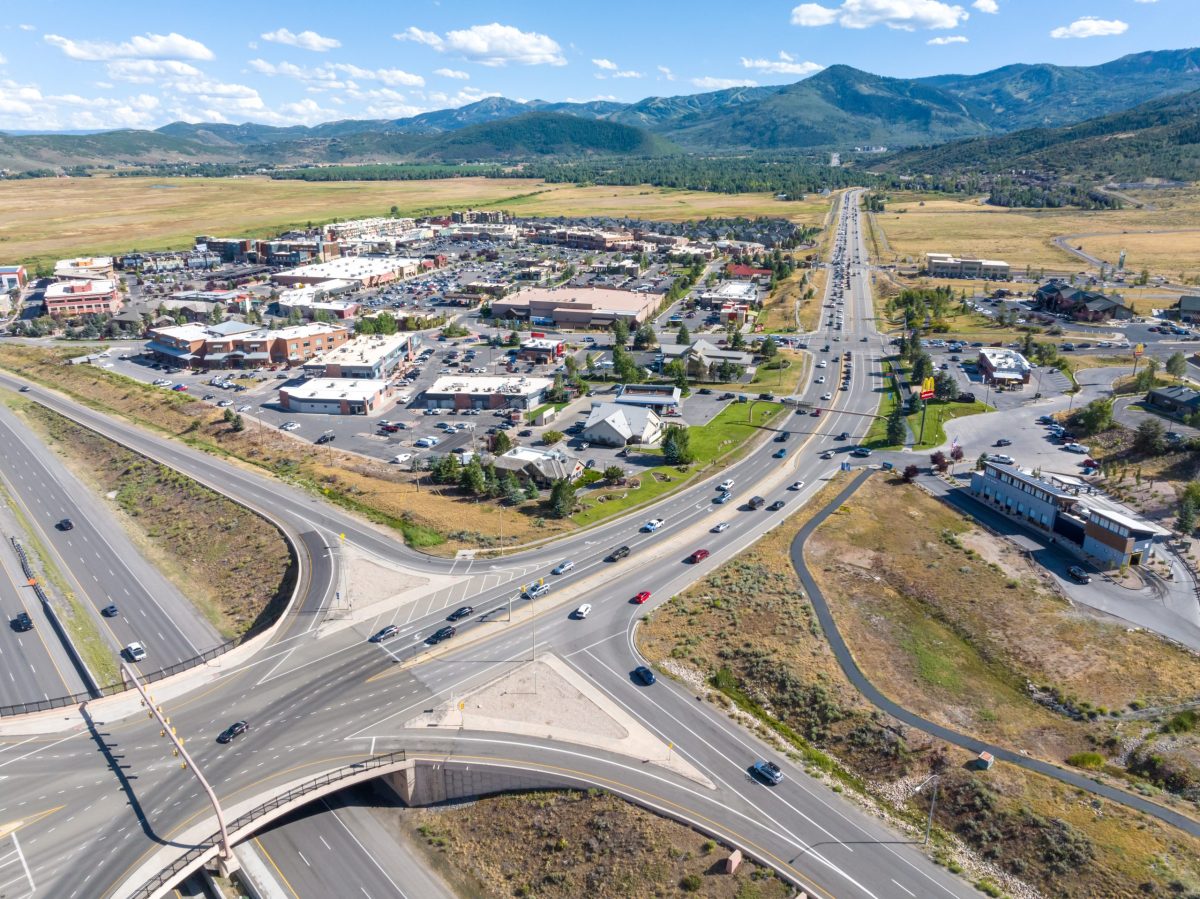The solution to fixing traffic on S.R. 224 could come down to a traditional widening project. However, Summit County officials are advocating for additional improvements to increase connectivity and community access in the Kimball Junction area.
Members of the County Council this week indicated they preferred the estimated $41 million intersection improvement project over a $107 million alternative that would create a split diamond interchange to divert traffic exiting Interstate 80 through the Outlets Park City area.
They asked the Utah Department of Transportation to combine the projects after the state eliminated the county’s preferred plan earlier in the spring. Yet officials learned on Wednesday that option wasn’t selected either.
Transportation Planning Director Carl Miller and county engineer Brandon Brady met with the County Council to provide an update on the Kimball Junction Environmental Impact Statement, and to strategize how to move forward before UDOT gives a formal presentation later this year.
The state was initially expected to make a final decision on which project it would choose in the winter. However, Miller said the amount of public feedback submitted on the draft plan likely pushed that to the summer of 2025.
Alternative C was touted as a typical UDOT project with new turn lanes. It would reduce queuing times on I-80, but it could impact pedestrian safety, neighborhood connectivity and travel speeds.
The project doesn’t rely on infrastructure near the outlet mall like Alternative A. It doesn’t have any pedestrian improvements like the split diamond project. However, Miller explained the projects are compatible with each other and elements of each could be incorporated later on if the traffic warranted it.
Alternative A would separate traffic by Whole Foods, bringing cars off the highway before the interchange. It would require a light to be installed at Ute Boulevard and Landmark Drive rather than the existing roundabout and a pedestrian underpass would be created to connect each side of S.R. 224.

The county’s transportation planners originally favored Alternative B, a $207 million project to create grade-separated intersections with one-way frontage roads. Officials liked the idea because the fly-under could have also served as a pedestrian bridge linking the neighborhoods.
However, it was screened out because of the number of roadway conflicts, costs and environmental impact. UDOT also eliminated the overpass idea because the underpass met all screening criteria.
It’s still possible to achieve some of that connectivity and sense of community with either alternative through a linear park strategy, Miller said. He also used the Pfluger Pedestrian Bridge in Austin, Texas as well as the Van Leesten Memorial Bridge in Providence, Rhode Island as examples of structures that connect active transportation and the surrounding environment in an attractive way.
Summit County could also choose to fund the construction of an overpass on its own.
County Councilor Canice Harte was in favor of such a betterment depending on the cost, which was unclear. He advocated for staff to push UDOT to build a pedestrian walkway over rather than under.
“This is a gateway to the area. So whatever happens down here, someone comes off the highway, this pedestrian overpass is going to make a statement, and it actually has brand value for the greater Park City area and Summit County as a whole,” Harte said, encouraging designers to focus on making it an experience.
Harte added the goal is to make Kimball Junction a more walkable area, and Alternative A would conflict with that notion because it brings more traffic onto Landmark Drive near the transit center.
Vice Chair Tonja Hanson agreed, though she lamented she wasn’t thrilled with any of the options. Chair Malena Stevens was interested in exploring cost-sharing opportunities to ensure an overpass is as attractive and functional as possible.
County Councilor Roger Armstrong added he also felt frustrated. He and co-member Chris Robinson favored Alternative C and said engineers could try to mitigate where the design performs worse than Alternative A.
Alternatives A and C scored the same in walking and biking comfort. Alternative C scored higher in convenience, safety and cost. Alternative A was better for transit, redundancy and access to businesses in the area.
UDOT is expected to present the draft Environmental Impact Study to the County Council in the late fall or winter. Visit kimballjunctioneis.udot.utah.gov for more information.

